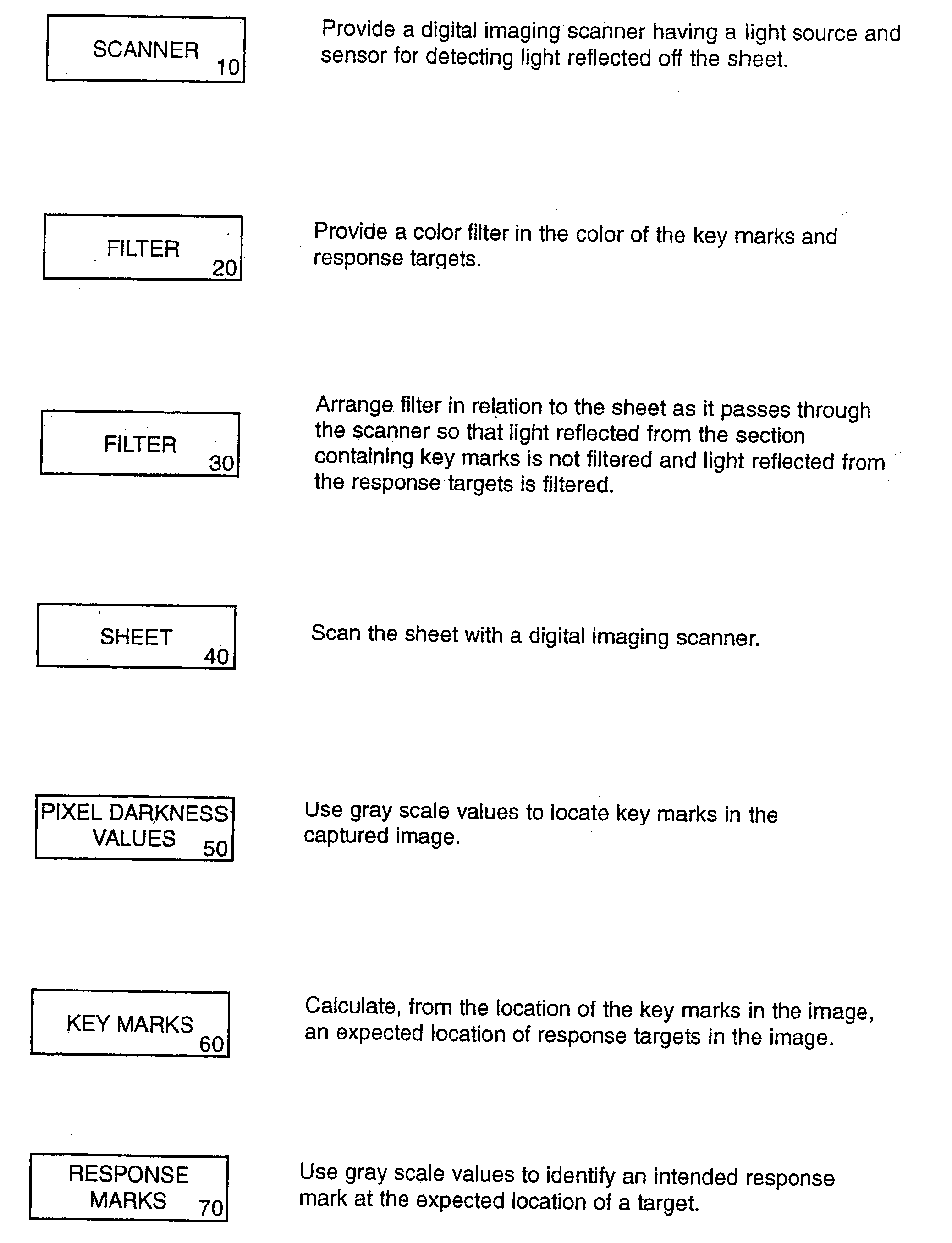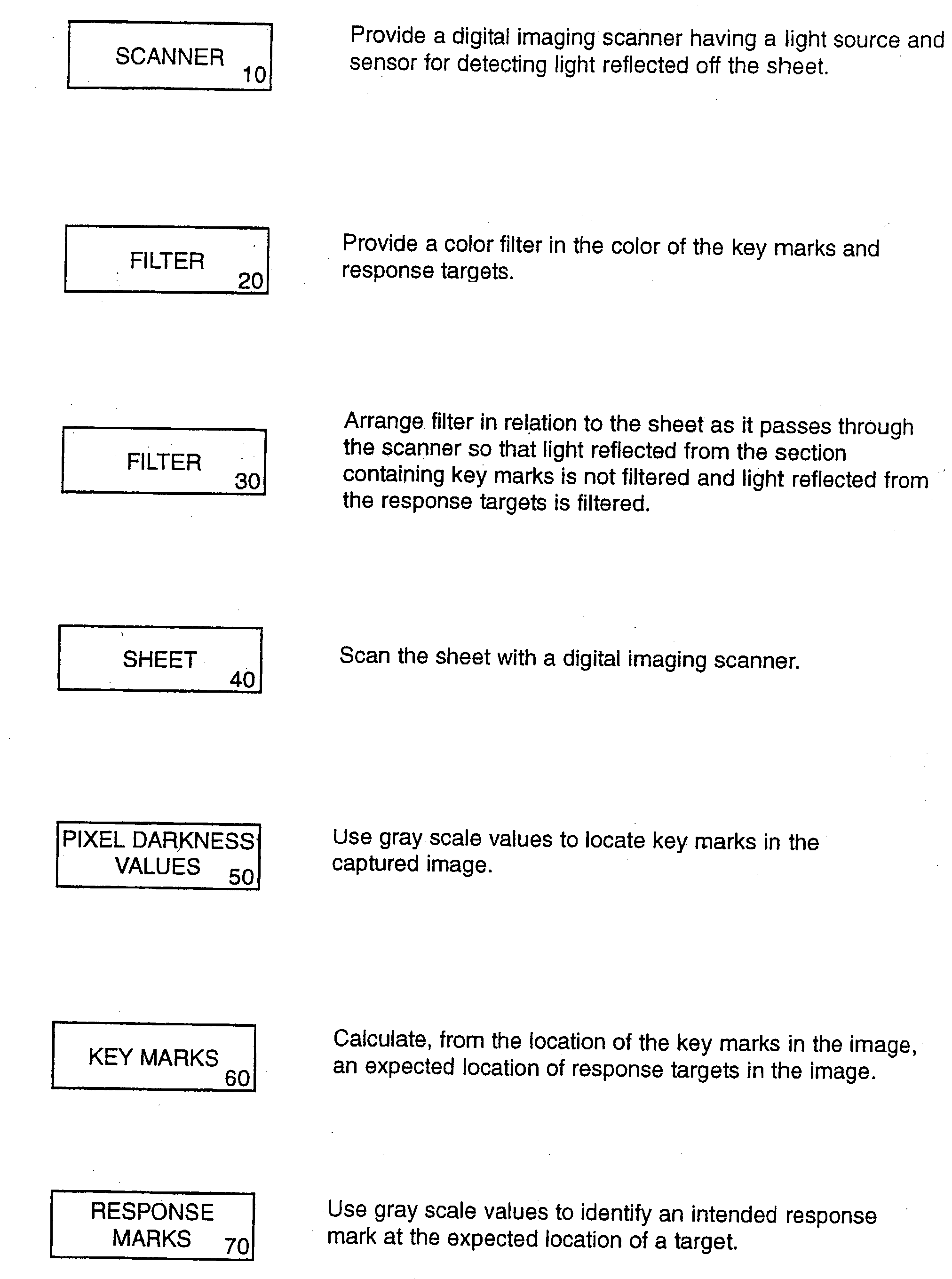Method and apparatus for selective processing of captured images
a selective processing and image technology, applied in the field of optical scanning, can solve the problems of high cost and exacting process of omr form printing
- Summary
- Abstract
- Description
- Claims
- Application Information
AI Technical Summary
Benefits of technology
Problems solved by technology
Method used
Image
Examples
Embodiment Construction
[0014] Throughout this specification the terms "sheet" and "form" are used interchangeably, and both refer to a document containing one or more areas for a person to respond to a question or instruction by making a mark in an appropriate location on the document. OMR forms for standardized testing are common, but not exclusive examples. As described earlier, these forms may contain printed marks for location, orientation, determination of scanning speed, or document identification by the scanner. These marks will be referred to herein as "key marks", with the understanding that the term includes, in its broad sense, timing tracks and any other type of mark utilized to process, orient, identify and interpret response sheets by optical scanning.
[0015] When reading this specification, reference is made to the colors of the visual spectrum. While black is technically not a color, but rather the absence of all color, when the term "color" or "visual spectrum" is used, it is considered to...
PUM
 Login to View More
Login to View More Abstract
Description
Claims
Application Information
 Login to View More
Login to View More - R&D
- Intellectual Property
- Life Sciences
- Materials
- Tech Scout
- Unparalleled Data Quality
- Higher Quality Content
- 60% Fewer Hallucinations
Browse by: Latest US Patents, China's latest patents, Technical Efficacy Thesaurus, Application Domain, Technology Topic, Popular Technical Reports.
© 2025 PatSnap. All rights reserved.Legal|Privacy policy|Modern Slavery Act Transparency Statement|Sitemap|About US| Contact US: help@patsnap.com



